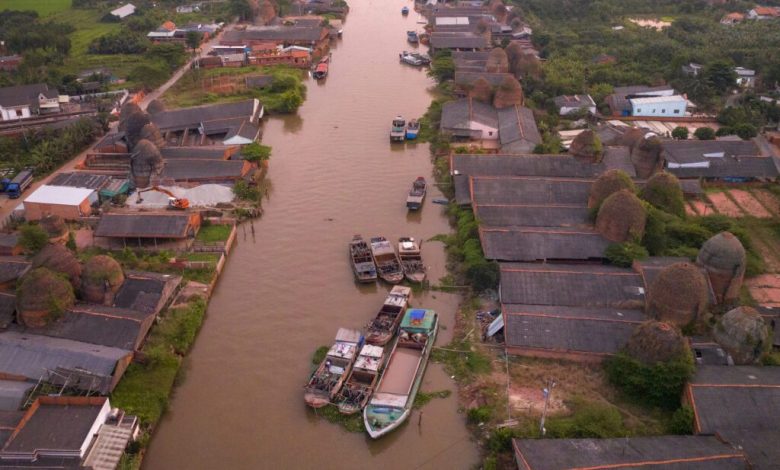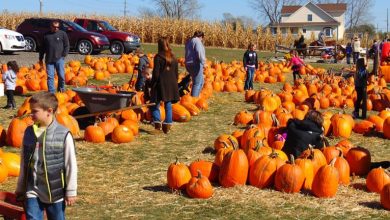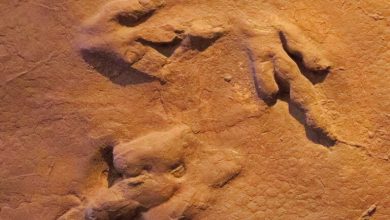
The Mekong River is the historic heart of continental Southeast Asia: an artery that nourishes landscapes, livelihoods, and legends. Today, it offers travellers a unique way to explore Viet Nam and Cambodia at a slower, more contemplative pace.

This Mekong Delta Cruise Trail is designed for those slower, more intentional traveler. Starting at the fertile banks of My Tho and ending at the ancient temples of Siem Reap, the Trail is a chance to see how life revolves around the river – market boats and stilt houses in one stop, temple towns and wetland sanctuaries in another.

My Tho, Viet Nam: A quick introduction to river life
The Mekong Delta Cruise Trail connects four key points: My Tho, Chau Doc, Phnom Penh, and Siem Reap. Its jump-off point is just two hours’ drive from Ho Chi Minh City: My Tho, a popular starting point for Mekong Delta cruises.
It’s well set up for day-trippers who want a look at life on the Mekong delta without going too far off track. Motorboat cruises take visitors past floating fish farms and houseboats, while smaller sampans – hand-rowed by local women – glide quietly through narrow, palm-shaded canals.
Island-hopping is a favorite diversion at My Tho. Thoi Son (Unicorn Island) is a popular tourist stop, where visitors can taste fresh fruit from local orchards, sip honey tea, and watch coconut candy being made by hand. There’s also the striking Vinh Trang Pagoda, known for its giant statues and mixed Vietnamese, Khmer, and European architectural styles.

Chau Doc, Viet Nam: Culture, wetlands, and border crossings
From My Tho, travellers can make their way to Chau Doc, either by road or through an overnight cruise that links various parts of the delta. Less touristy and more immersive than its neighbours, Chau Doc reveals the delta’s diversity, in both ecological and cultural dimensions.
Cham and Khmer communities live along the water in floating villages. Boat tours can take you through fish farms and into the Tra Su Cajuput Forest, where flat-bottomed boats drift quietly past egrets and dense green wetlands.
Off the water, Sam Mountain dominates the skyline. Pilgrims climb it to reach Ba Chua Xu Temple and enjoy sweeping views of Viet Nam’s borderlands.
Speedboats to Phnom Penh typically operate daily during the high season, taking around six and a half hours, with a mid-way stop at the Vinh Xuong border crossing for Cambodian visa processing. There’s a stop at the Vinh Xuong border crossing mid-way, where you can secure a visa to Cambodia before proceeding to your destination.

Phnom Penh, Cambodia: History on the riverfront
Arriving in Phnom Penh by boat gives you a feel for how the city developed: its heart still tied to the water. Its location on the Tonle Sap and Mekong Rivers makes Phnom Penh a key hub for multi-day Mekong cruises, especially the longer itineraries that run between Viet Nam and Siem Reap.
From the ferry terminal and Wat Phnom, the city’s bustling riverfront extends to the Cambodiana Hotel building and Norodom Boulevard. Its lanes are lined with cafés, markets, and old buildings, and there’s no shortage of things to do on foot or by tuk-tuk.
Many visitors stop first at the Royal Palace and National Museum. Others head straight to Tuol Sleng to better understand Cambodia’s history. Sunset cruises are an easy way to wind down after sightseeing, with views of the skyline and river traffic.

Siem Reap, Cambodia: Angkor and beyond
Angkor Wat and its surrounding temples overshadow any experience at Siem Reap. Most travellers spend a few days temple-hopping around the massive temple site, going by tuk-tuk or bike. The early-morning visit to Angkor Wat is as popular as ever, but quieter corners like Banteay Srei or the forested ruins of Ta Prohm can be just as memorable.
Beyond the temples, there are boat trips to Tonlé Sap Lake and nearby floating villages, as well as workshops, local markets, and hikes to Kulen Falls. In the evenings, Pub Street and the night market draw a mix of locals and travellers.
This river route – My Tho to Chau Doc to Phnom Penh to Siem Reap – connects some of the Mekong’s most distinctive places. It’s not a secret trail, but one where the pace is slower, the experiences are grounded, and the river remains a constant companion.



